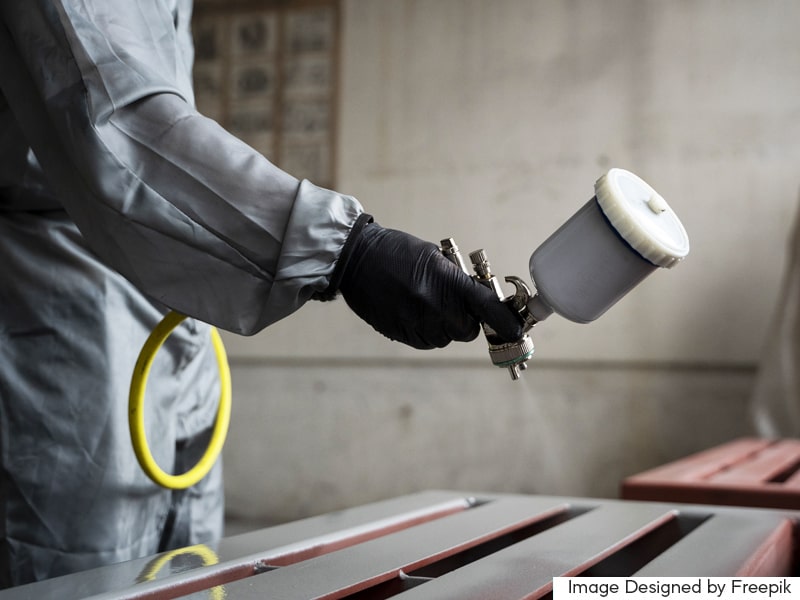Industrial paints are a category of paints specifically designed for use in industrial and commercial settings, where greater strength and durability are required than conventional paints used in residential and commercial applications.
These paints are formulated with high quality resins and pigments to provide superior protection against corrosion, wear, abrasion and weathering.
Industrial paints can also be resistant to chemicals and extreme temperatures, making them ideal for use in harsh environments such as manufacturing plants, factories, and construction sites.
Industrial paints are important because they provide essential protection for structures and equipment in industrial and commercial settings.
By extending the life of objects and surfaces, industrial paints can help reduce maintenance and repair costs, and ensure workplace safety by preventing corrosion and other types of damage.
In addition, industrial paints can also provide greater visibility and safety at work sites by being used to mark danger zones or to mark evacuation routes and emergency equipment.
In short, industrial paints are important because they help maintain high quality of work and safety in industrial and commercial settings.
How many types of industrial paints exist according to their composition?
There are several types of industrial paints classified according to their chemical composition and specific properties. Here is a list of some of the more common types:
1. Epoxy paints: these paints are made up of epoxy resins and hardeners that provide excellent chemical and mechanical resistance, as well as high adhesion.
2. Polyurethane Paints: These paints are made up of polyurethane resins and provide excellent resistance to abrasion, corrosion and UV rays.
3. Polysiloxane Paints: These paints are made up of polysiloxane resins and are known for their high durability and resistance to chemicals and weathering.
4. Silicate paints: These paints are made up of silicates and provide excellent resistance to fire and heat, as well as high water vapor permeability.
5. Zinc Paints : These paints are made up of zinc pigments and are known for their excellent corrosion resistance and ability to protect steel.
6. Alkyd Paints: These paints are made up of alkyd resins and are known for their easy application and quick drying, as well as good adhesion and weather resistance.
7. Chlorinated rubber paints: These paints are made from chlorinated rubber resins and provide good resistance to abrasion, chemicals and weathering.
Each type of industrial paint has its own advantages and disadvantages, and it is important to select the right paint for a specific application based on the required properties.
How many types of industrial paints exist according to their final use?
There are many types of industrial paints classified according to their final use.
Some of the most common types of industrial paints according to their use are described below:
1. Paints for metallic structures: they are used to protect steel and other metals from corrosion and oxidation. Paints for metallic structures can be epoxy, polyurethane, zinc, among others.
2. Paints for floors: they are used to cover and protect concrete floors in industrial plants, workshops and warehouses. Floor paints can be epoxy, polyurethane, acrylic, among others.
3. Paints for wood: they are used to protect wood from weathering, humidity and exposure to sunlight. Wood paints can be alkyd, acrylic, epoxy, among others.
4. Paints for vehicles and machinery: they are used to protect the surface of vehicles and machinery against corrosion and abrasion, as well as to improve their aesthetic appearance. Paints for vehicles and machinery can be acrylic, polyurethane, epoxy, among others.
5. Paints for signaling: they are used to mark danger zones, indicate evacuation routes and indicate emergency equipment in work sites. Signage paints can be of different colors and compositions according to specific needs.
6. Pipe and tank paints: used to protect the interior of pipes and tanks from corrosion and other damage. Paints for pipes and tanks can be epoxy, polyurethane, chlorinated rubber, among others.
Each type of industrial paint has its own specific characteristics and properties to meet its end use, so it is important to select the right paint based on the specific application and needs.

